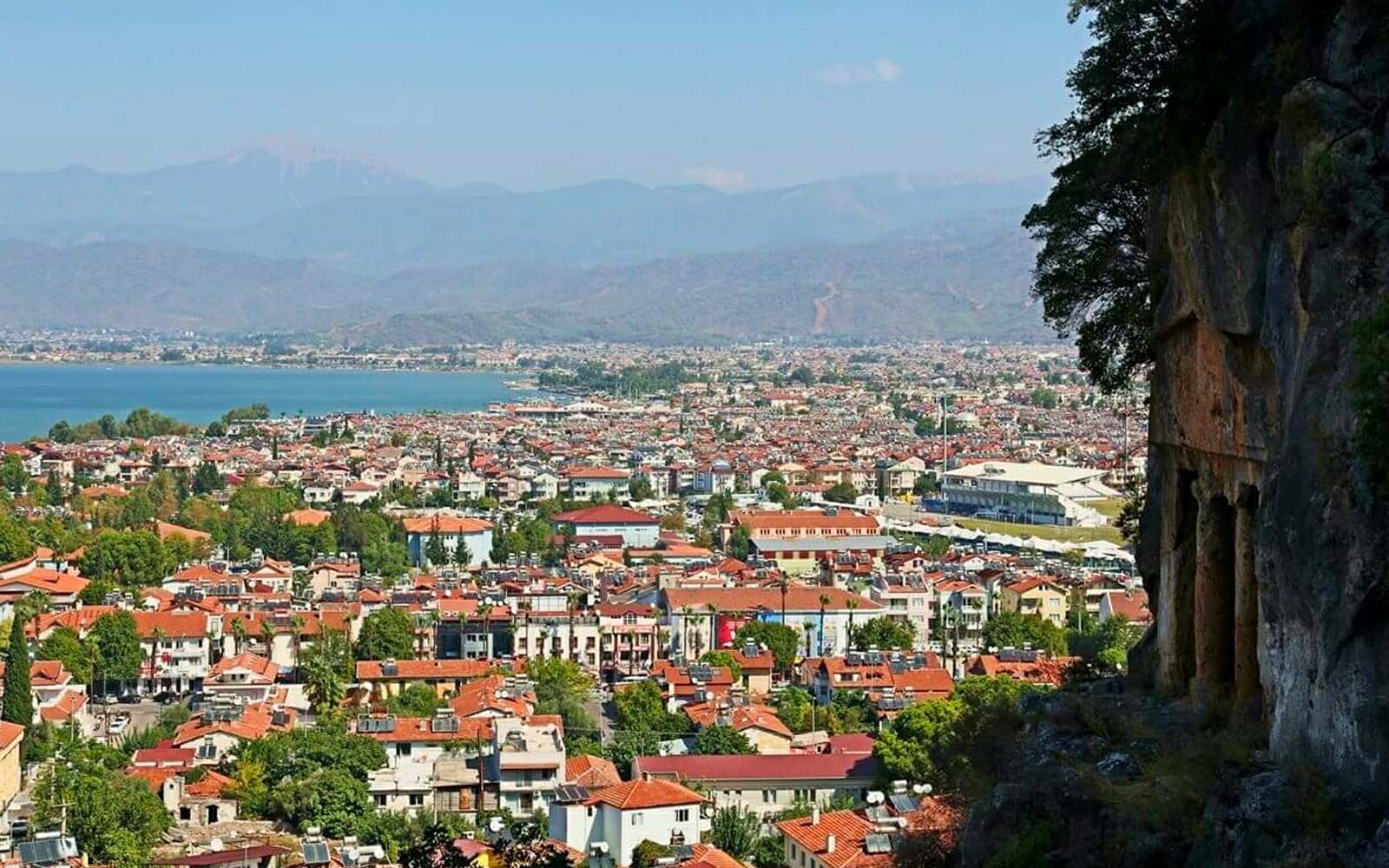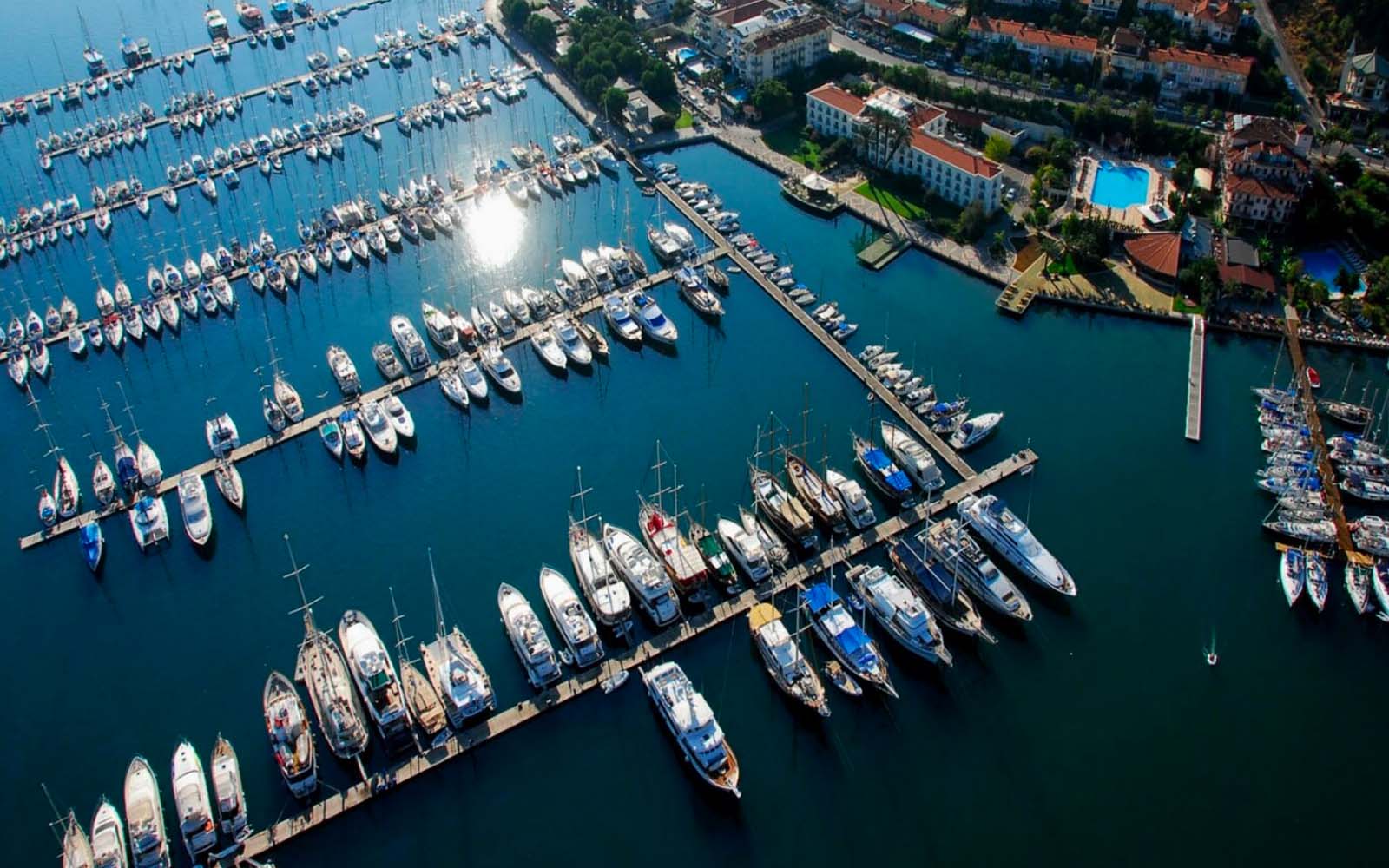The ruins of the ancient city of Telmessos, which was established on a wide area extending from the slopes of the mountain on which Fethiye is today, to the gulf, can still be seen today. When you look up, you will see Amintas King's Tomb on the hillside. The façade of the mausoleum in Ionic style and temple type has two columns. In the middle of the left column, "Amintas son of Hermapias" is written. There are three stone pedestals inside.
You will see many sarcophagi and rock tombs in and around the city. The most important monumental sarcophagus is next to the PTT and belongs to the Lycian period. The sarcophagus is decorated with reliefs symbolizing warriors.
There are the ruins of a castle thought to have been built by the Knights of St. John in the Telmessos acropolis on the hill rising to the south of the city. The castle was also used during the Ottoman Period. Those who go up the hill will see the remains of the city walls, the cistern and small rock tombs on the eastern face of the hill.
Telmessos' amphitheater was unearthed as a result of the excavations carried out just above the pier. It is understood that the theater, which was built during the Early Roman Period and was repaired in the 2nd century AD, had a capacity of 5,000 people and was used as an arena during the Byzantine Period. Among the works belonging to the Ottoman Period in Fethiye, the Old Mosque and Fethiye Bath, built in 1791, can be counted. Both works are in Paspatur Bazaar. The Old Mosque and the hammam with 14 domes and 6 arches are still in use today. Fethiye Martyrs Monument, opened in 2001; It was erected in memory of the War of Independence, the Çanakkale Wars, the Cyprus and Korean Martyrs. The reliefs surrounding the pedestal depict the soldiers who were martyred in these wars.




